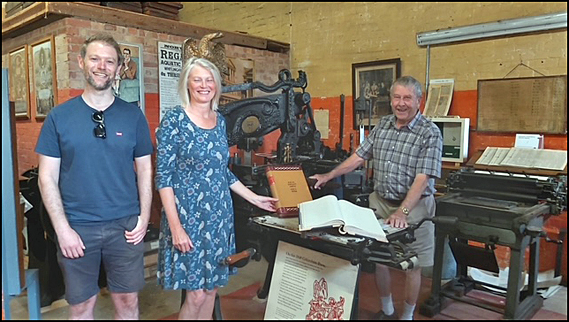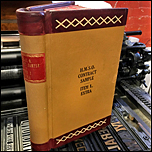
Hi Reg, The attached, and a few others, were rescued from a skip a while ago and are now in the Norwich Printing Museum.
Do you, or does anybody else, know who used it and how?
Regards, Dennis Greeno
Hello Dennis, My word, what an elegant piece of binding. Not something I have seen before, and there are not many ex HMSO people around that I think might be familiar with it. We will see if anyone can help.
Best wishes, Reg.
John Nash adds: This is from the very distant past. I have seen before though not in such fine binding – more in the orthodox everyday binders. I was in S4d which tended to deal in ’Specials’ rather than Stock items, but I am sure the other Supply sections had guides like this for envelopes, various papers etc – there was obvious liaison with Contracts Division too. Hope this helps and perhaps jogs other folks’ memories.
John Rumball adds: Binding originated in the Dickensian period when account entries were in copperplate writing, and used by clerks at a desk. The binding is called a Springback ledger with Russia bands as the ledger was written on a flat surface. Everything built in the binding enabling the ledger to last years ‘Russia’ bands are the vellum criss-cross features to prevent wear in handling when opened flat and the spring back spine especially built to enable the ledger to open flat, enabling the writing or accounts continuation from Recto to Verso across the spine fold. The ledger even when opened and closed dozens of times retains its shape for years.

John Rumball, with Simon Gibbons’ family, at the
Norwich Printing Museum, Blickling, with the mystery sample binding.

